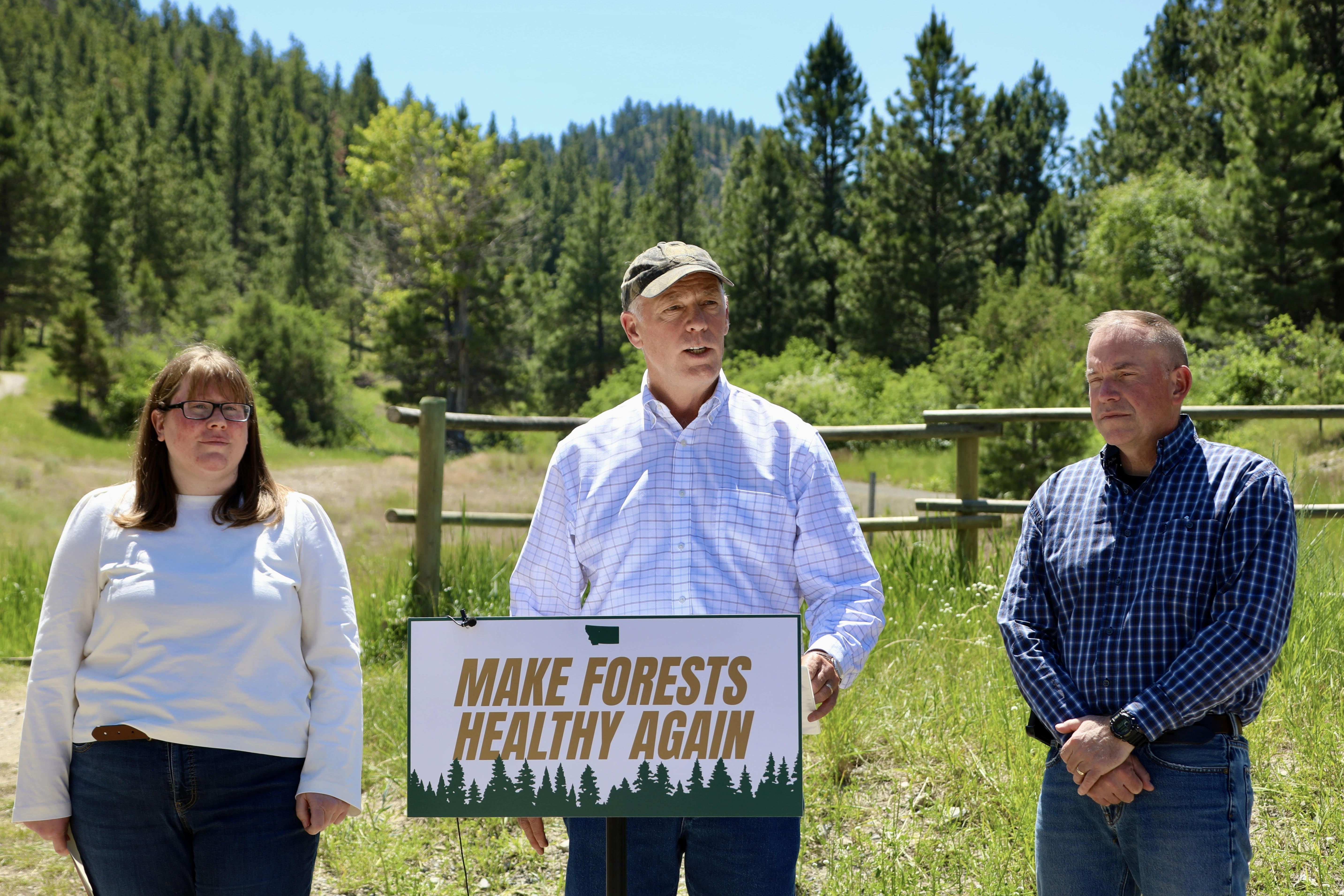Governor Gianforte, USFS Chief Schultz Sign Historic Forest Management Agreement – State of Montana Newsroom (.gov)

Montana Finalizes 200,000-Acre Forest Management Agreement Promoting Sustainable Development
Introduction
On June 30, 2025, Governor Greg Gianforte of Montana and U.S. Forest Service (USFS) Chief Tom Schultz formalized a landmark Shared Stewardship Agreement between the State of Montana and the U.S. Department of Agriculture Forest Service. This historic agreement aims to enhance forest restoration, wildfire risk reduction, and sustainable timber production across Montana’s national forests and adjacent lands, aligning with several Sustainable Development Goals (SDGs).
Key Objectives and Sustainable Development Goals
The agreement establishes a new framework to dramatically increase the pace and scale of forest management activities, with a strong emphasis on sustainability and community well-being. The initiative supports the following SDGs:
- SDG 13: Climate Action – By reducing wildfire risks and restoring forest health, the agreement contributes to climate resilience and mitigation.
- SDG 15: Life on Land – Promotes sustainable forest management and biodiversity conservation.
- SDG 8: Decent Work and Economic Growth – Supports local jobs through sustainable timber production and forest management activities.
- SDG 17: Partnerships for the Goals – Demonstrates effective collaboration between federal and state agencies for sustainable resource management.
Details of the Shared Stewardship Agreement
- The agreement leverages federal authorities such as the EXPLORE Act and Good Neighbor Authority to streamline project delivery and reduce regulatory delays.
- It commits both the Montana Department of Natural Resources and Conservation (DNRC) and the USFS to jointly identify and implement large-scale forest management projects.
- The initial focus is on managing at least 200,000 acres in northwest Montana.
- Targets include aggressive timber harvest goals and regular public reporting on progress via a public-facing dashboard tracking acres treated, board feet harvested, and community safety improvements.
- The agreement is effective for 20 years with options for renewal or extension.
- Dedicated staff will be assigned for statewide coordination and implementation.
Impact on Montana Communities and Forest Health
Governor Gianforte emphasized the importance of this agreement in advancing active forest management to reduce wildfire risk, support local economies, and maintain healthy forests for future generations. Since 2021, DNRC has increased forest management activities significantly, placing over 130,000 acres under management during the governor’s tenure.
Cross-boundary projects involving federal, state, and private lands have enhanced Montana’s ability to protect communities and natural resources from wildfire and forest health challenges.
Statements from Leadership
- Governor Greg Gianforte: Highlighted the agreement as historic progress for Montana’s forests and communities, empowering the state to lead in sustainable forest management.
- U.S. Secretary of Agriculture Brooke L. Rollins: Praised the partnership for reducing bureaucratic hurdles and fostering conservation alongside economic growth.
- Forest Service Chief Tom Schultz: Described the agreement as a model for collaborative, landscape-scale forest management benefiting both Montana and the nation.
Additional Resources
- To view the full Shared Stewardship Agreement document.
- To watch the announcement video, visit this link.
1. Sustainable Development Goals (SDGs) Addressed
- SDG 13: Climate Action – The article discusses forest restoration and wildfire risk reduction, which are critical to combating climate change and its impacts.
- SDG 15: Life on Land – The focus on sustainable forest management, restoration of forest health, and protection of ecosystems aligns directly with this goal.
- SDG 8: Decent Work and Economic Growth – The agreement supports local jobs and economic opportunities through sustainable timber production and forest management.
- SDG 17: Partnerships for the Goals – The Shared Stewardship Agreement exemplifies multi-stakeholder partnerships between federal and state agencies to achieve sustainable development.
2. Specific Targets Under the Identified SDGs
- SDG 13 – Target 13.1: Strengthen resilience and adaptive capacity to climate-related hazards and natural disasters in all countries.
- The agreement aims to reduce wildfire risk and protect communities, directly contributing to this target.
- SDG 15 – Target 15.2: Promote the implementation of sustainable management of all types of forests, halt deforestation, restore degraded forests, and substantially increase afforestation and reforestation globally.
- The landscape-scale forest restoration and sustainable timber harvest targets align with this target.
- SDG 8 – Target 8.3: Promote development-oriented policies that support productive activities, decent job creation, entrepreneurship, and innovation.
- The agreement’s focus on supporting local jobs through sustainable timber production reflects this target.
- SDG 17 – Target 17.17: Encourage and promote effective public, public-private, and civil society partnerships.
- The Shared Stewardship Agreement is a clear example of such a partnership.
3. Indicators Mentioned or Implied to Measure Progress
- Acres Treated: The article mentions tracking the number of acres treated through forest management projects as a measure of progress.
- Board Feet Harvested: Timber harvest volumes are monitored to assess sustainable timber production.
- Community Safety Improvements: Improvements in community safety related to wildfire risk reduction are tracked.
- Regular Public Reporting and Dashboard: The use of a public-facing dashboard to report on these indicators ensures transparency and accountability.
4. Table of SDGs, Targets, and Indicators
| SDGs | Targets | Indicators |
|---|---|---|
| SDG 13: Climate Action | 13.1: Strengthen resilience and adaptive capacity to climate-related hazards and natural disasters. |
|
| SDG 15: Life on Land | 15.2: Promote sustainable forest management, halt deforestation, and restore degraded forests. |
|
| SDG 8: Decent Work and Economic Growth | 8.3: Promote policies supporting productive activities and decent job creation. |
|
| SDG 17: Partnerships for the Goals | 17.17: Encourage and promote effective public, public-private, and civil society partnerships. |
|
Source: news.mt.gov








